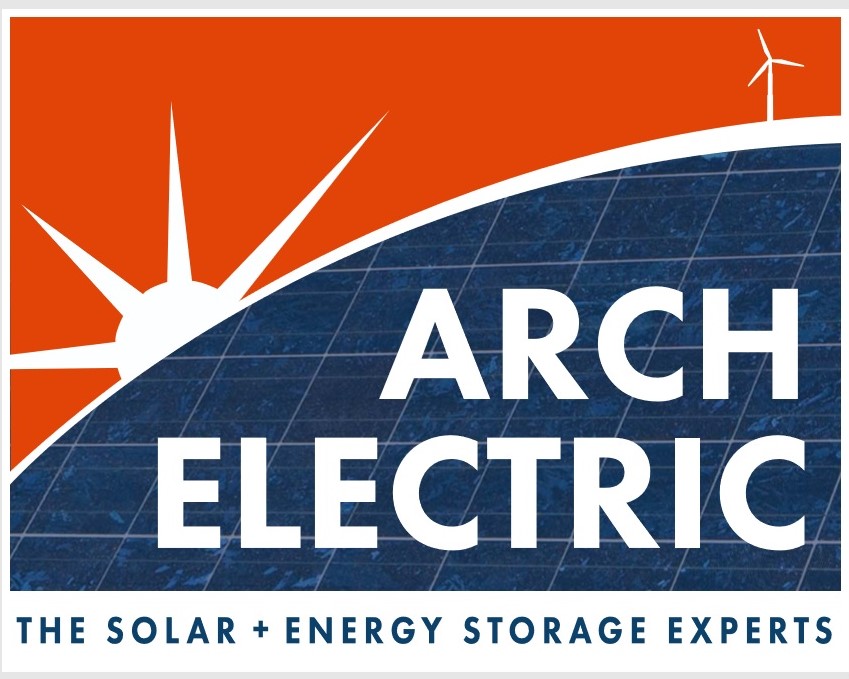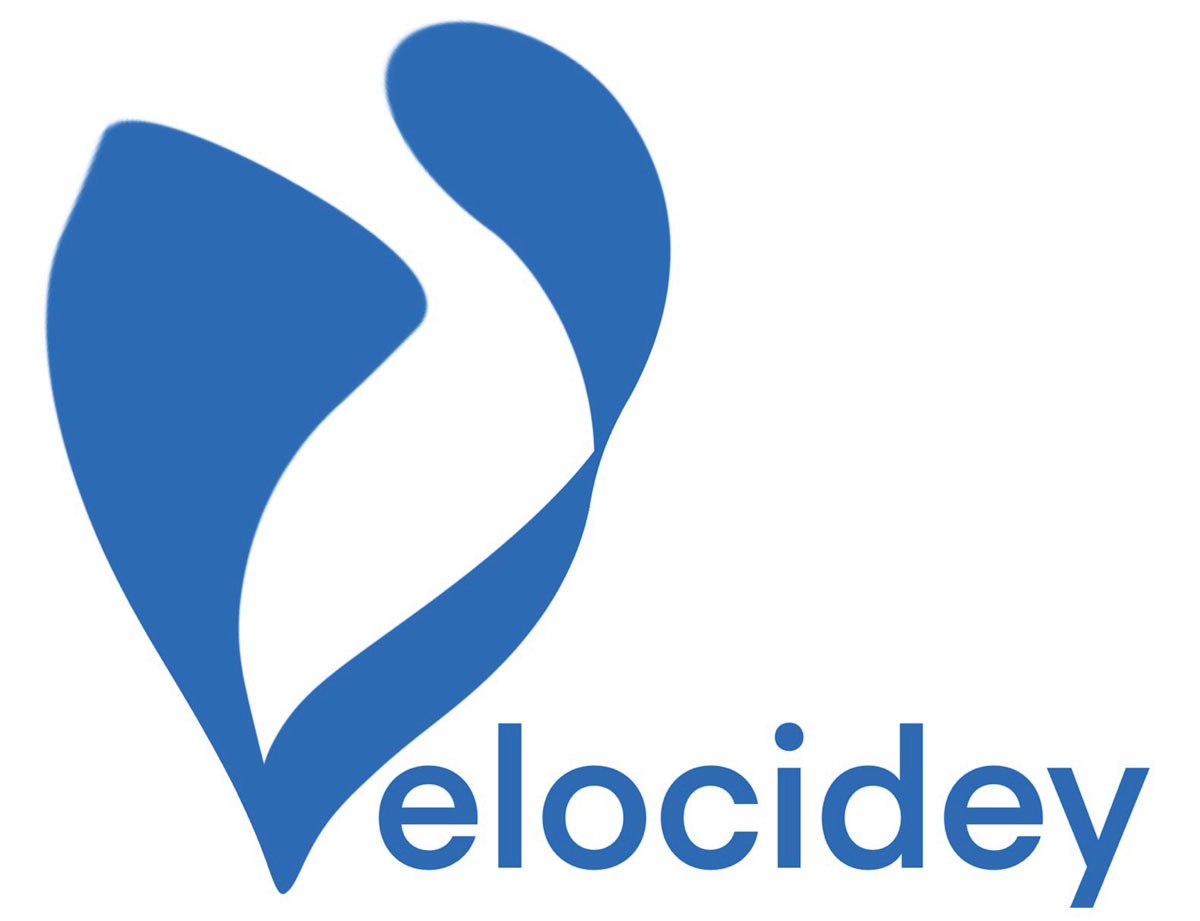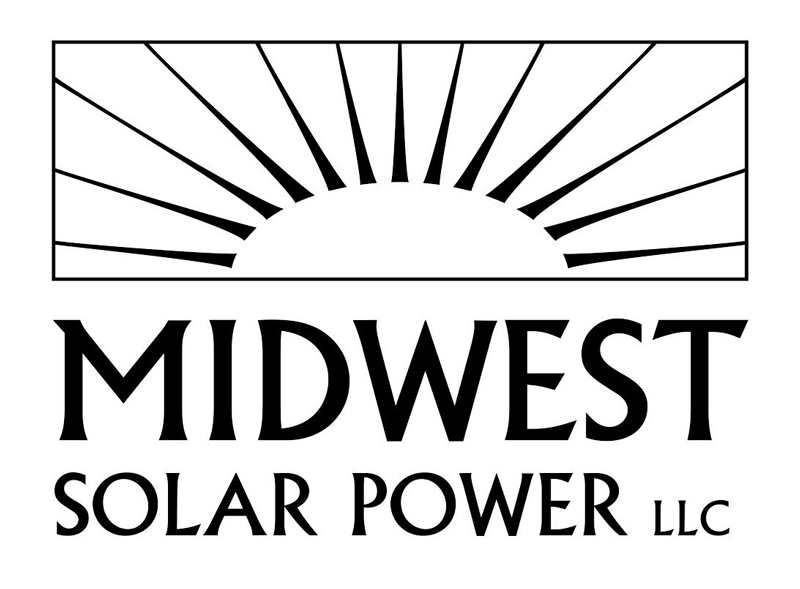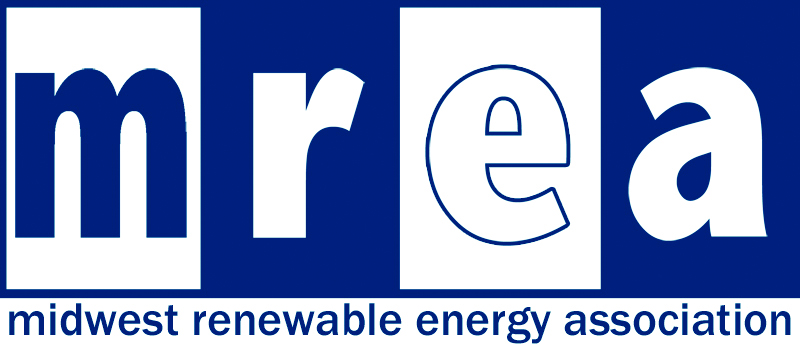
by Michael Vickerman | Oct 27, 2021 | Advocacy, Community, Community Solar, Local Government, Policy, RENEW Wisconsin, Renewables, Solar, Sustainability
For decades, utility investments in power plants and transmission lines have been predicated on the concept of economies of scale. The theory behind it is beguilingly simple: the larger the installation sought by an electric utility, the lower the unit cost of the investment, which utility planners and regulators regard as a measure of economic efficiency. When loads are growing, the “bigger is better” paradigm is often an economically rational fit for electric utilities seeking to recover large-scale capital investments in fossil generation over the broadest possible cohort of current and future customers.
But solar power, the default resource option for electric providers today, is a somewhat different animal due to its scalability. Yes, economies of scale can certainly reduce the unit price of solar generating capacity, but other on-the-ground factors can influence the economics of this resource. These factors include but are not limited to the cost of acquiring site control of the host properties and obtaining all the necessary approvals to construct the project. Interconnection costs can be high as well, especially for larger projects requiring additional land and approvals to supply power to the grid.
These thoughts came to mind after visiting two smaller solar farms that started producing power this year. The first project, called Strobus Solar, was developed by OneEnergy Renewables and serves Jackson Electric Cooperative. The second installation, O’Brien Solar Fields, was one of the stops in this September’s Ride with RENEW bicycle tour. Developed by EDF Renewables and owned by Madison Gas and Electric (MGE), this 20 MW solar farm in Fitchburg supplies electricity to seven MGE customers under long-term contracts.
At a Glance
Solar For the Distribution Grid – 2021 |
| Project name |
Strobus Solar |
O’Brien Solar |
| County of location |
Jackson |
Dane |
| Capacity (in MWac) |
1.5 |
20 |
| Project developer |
OneEnergy Renewables |
EDF Renewables |
| Project owner |
Greenbacker Capital |
Madison Gas + Electric |
| Utility territory |
Jackson Electric |
Madison Gas + Electric |
| General contractor |
Arch Electric |
Boldt Construction |
| Landowner |
Northern Family Farms |
O’Brien Brothers Farm |
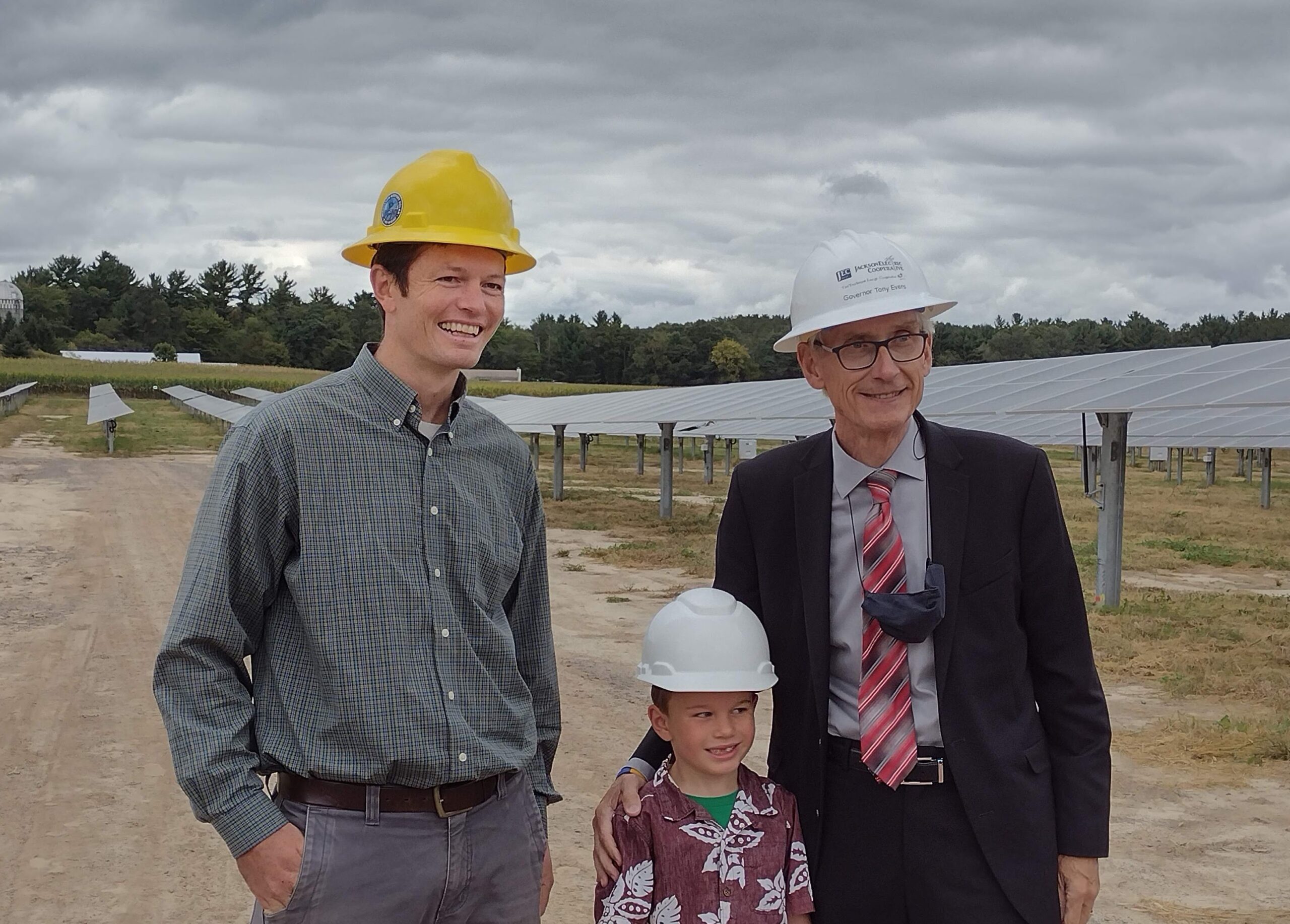 Governor Evers and the Project Developer, Eric Udelhofen, from OneEnergy Renewables at the Ribbon Cutting Ceremony for the Strobus Solar project.
Governor Evers and the Project Developer, Eric Udelhofen, from OneEnergy Renewables at the Ribbon Cutting Ceremony for the Strobus Solar project.
Strobus – A Mastodon Solar project
Occupying a mere 12 acres, Strobus Solar is located about six miles north of Black River Falls and is tucked into a compact parcel framed by evergreen trees and U.S. Highway 12. On a cloudy September day, more than 50 people attended a ribbon-cutting ceremony for the Strobus project, one of eight solar farms in southeast Minnesota and west-central Wisconsin that make up OneEnergy’s Mastodon Solar portfolio. With a combined 17 megawatts (MW) of AC-rated capacity, all eight Mastodon solar farms are located in the territory served by rural electric cooperatives.
As noted on OneEnergy’s website, “the electricity generated by each project will be purchased by the local participating electric cooperative, resulting in savings on energy supply and increased resiliency. These savings will be passed onto the cooperative’s members. The available Renewable Energy Credits will then be sold separately to visionary buyers committed to ensuring their renewable energy procurement dollars are devoted to new projects that serve local communities.”
Of the four Mastodon projects located in Wisconsin, Strobus is the second to be energized this year, following Blue Prairie, a 2.5 MW installation southwest of Black River Falls. The other two, Stromland and Shamrock, should be operating before the end of this year. Plymouth-based Arch Electric is the general contractor for all four Wisconsin projects.
Governor Evers spoke at the ribbon-cutting ceremony, along with representatives of Jackson Electric Cooperative, Arch Electric, and Northern Family Farms, the participating landowner. Based in nearby Merillan, Northern is Wisconsin’s largest Christmas tree grower, operating on more than 7,000 acres. After the prepared remarks, OneEnergy and Arch opened the gates to let Governor Evers and other guests circulate through the project and ask questions.
On one corner of the Strobus parcel is the substation that feeds the solar-generated electricity directly into the wires overhead. Though the equipment onsite is brand-new, low-growing grassy vegetation has already been established, covering the entire project footprint. After three years, the mix of deep-rooted, primarily native plants will provide a healthy habitat for birds, insects, and other species. At nearby Blue Prairie, sheep are already grazing around and under the 7,000 panels installed there.
Strobus is expected to generate about 3,000 megawatt-hours of electricity a year. But the Renewable Energy Credits associated with that output will not flow to Jackson Electric. They will instead be sold to Native, a Public Benefits Corporation, through its New Renewables Portfolio.
According to Native’s website, the purpose of the Portfolio “is to enable Renewable Energy Credit (REC) buyers to play a causal role in actualizing new renewable energy projects. Native has committed to a 10-year renewables purchase agreement with Strobus, LLC on behalf of Portfolio investors. Without this type of long-term REC purchasing agreement, this project would not be economically viable.”
 O’Brien Solar Fields in the city of Fitchburg, Wisconsin.
O’Brien Solar Fields in the city of Fitchburg, Wisconsin.
O’Brien Solar – Clean Energy Produced Offsite for Larger Customers
Occupying 130 acres along the edge of urban Fitchburg, O’Brien Solar Fields is as large as a distributed solar project gets. However, while every kilowatt-hour produced at O’Brien flows directly into Madison Gas and Electric’s distribution grid, only seven customers see the impact of this project on their utility bills. Those customers are the State of Wisconsin, University of Wisconsin-Madison, City of Fitchburg, Promega, Placon, Tribe 9 Foods, and Willy St. Co-op.
Energized this summer, O’Brien Solar is the newest Renewable Energy Rider (RER) project serving MGE customers. Several years ago, MGE received approval from the Public Service Commission (PSC) to build solar farms to serve individual customers, including those with multiple facilities, through its RER program. Unique to MGE, this service allows customers to be served by one larger solar farm instead of building numerous solar systems to supply each of their facilities.
A voluntary program, MGE’s RER program does not affect base electric rates. Participating customers fully absorb the cost of MGE’s investment in the solar arrays, and these costs are spread over 30 years. The electricity generated at O’Brien offsets grid power that would otherwise flow to these customers at specified prices throughout the contract term. Should standard electric rates rise faster than the agreed-upon pricing for O’Brien’s electricity, the savings will flow directly to the participating customers.
This unique model combines elements of both behind-the-meter generation and community solar power. But in order to entice customers to access brand-new yet low-cost sources of power, the project owner must design and develop projects that are competitive with the utility’s own avoided cost of power.
The question arises, what did MGE do to keep O’Brien’s development costs in line with its investments in larger solar projects and make it an affordable option for customers?
First, the project occupies only one parcel of land, the former Stoner Prairie Dairy owned and operated by the O’Brien brothers over several generations. Though the parcel is adjacent to a rapidly growing neighborhood, the project’s configuration allows the O’Brien family to maintain its most profitable farming operations as well as live in their long-time residence. Negotiating with only one landowner gives a developer more room in tailoring the project to avoid potentially expensive workarounds.
Second, from an electrical perspective, the project is divided into three zones, each with a separate interconnection to MGE’s feeder lines. By spreading out the project’s output in this fashion, MGE could forgo the more significant expense of running a large tie-in line to the closest substation.
Third, much like a 30-year residential mortgage, the RER contract is a powerful tool for breaking down a significant capital outlay into a manageable expense for the customer. Just as utilities rely on extended depreciation schedules to help them digest the costs of building central station power plants, the RER service provides a similar benefit to participating customers.
In the end, the all-in cost of O’Brien Solar Fields amounted to $29.5 million, which, on a unit basis, comes to $1,475 per kilowatt (kW). To put that number in perspective, the unit price of six larger solar farms totaling 414 MW that Alliant Energy proposes to acquire is $1,449 per kW. In fact, O’Brien’s unit cost is within 10% of the estimated cost of acquiring a 20 MW share of a project ten times as large.
Moreover, it took only three years for EDF Renewables, O’Brien’s original developer, and MGE to advance this power plant from the concept stage to fruition, a relatively speedy turnaround compared with larger solar installations.
Conclusion: The Policy Case for Smaller Solar Farms
Indeed, small solar farms can deliver affordable electricity at a reasonable price by avoiding the increased complexities and additional permitting hurdles associated with larger solar farms that tie into the transmission system. Moreover, while larger solar farms make a great deal of sense in areas rich in transmission infrastructure, relying solely on those locations would exclude much of Wisconsin from being able to host solar power.
There are many parcels of land throughout Wisconsin that have the requisite attributes for hosting projects on the scale of Strobus and O’Brien. In addition, projects of that size are ideal vehicles for community solar offerings, designed to deliver zero-carbon electricity to subscribing customers who cannot access solar power at their residence or business.
Over time, with increases in system power costs looking very likely, the state should explore and adopt policies to promote smaller solar farms within its boundaries. As exemplified by the Strobus and O’Brien projects, development on that scale can yield faster results at comparable costs while potentially providing a reliable revenue stream to the many thousands of landowners who don’t live near high-capacity transmission lines and substations.
Wisconsin is in the beginning stages of an energy revolution. With a more forward-looking policy framework, Wisconsin could emerge as a national leader in solar power. Embracing distribution-level solar solutions now will help more Wisconsinites participate in the benefits of these projects and give every city, town, and village a solar project to call their own. Wisconsin’s population is distributed throughout the state–our renewable energy portfolio should be as well.

by RENEW Wisconsin | Oct 26, 2021 | Advocacy, Community, Community Solar, Electric Vehicles, Events, Home, Jobs, Legislative Watchlist, Local Government, Policy, RENEW Wisconsin, Renewables, Solar, Sustainability
On October 13, RENEW Wisconsin and Wisconsin Conservative Energy Forum (WCEF) hosted their first-ever Renewable Energy Day at the Capitol in Madison. The event included issue briefings by industry experts on a variety of legislation that has been introduced this year related to the solar and electric vehicle industries. Attendees then went to the State Capitol to speak with their legislators to gain support for these important issues.
During a welcome reception, the evening before the Day at the Capitol, RENEW and WCEF held a panel discussion “Energy in Transition: Policy and Politics.”

From right to left were moderator, Scott Coenen (WCEF), Dan Ebert (former PSC Chairman), Senator Rob Cowles, Larry Ward (Conservative Energy Network), and Jim Boullion (RENEW Wisconsin).
The panel discussed the current uncertainty in world energy markets and the impact that energy shortages and spiking prices will have on the world. There was consensus from the conversation that panelists believe renewables can help stabilize much of this energy uncertainty, but that the industry needs to be realistic about its role in a world where supply is not meeting demand. Businesses, households, and communities in Wisconsin should be empowered to invest in their own energy generation.
Before attendees went to the Capitol to meet with their legislators, there was an issue briefing with a panel of industry experts moderated by Jim Boullion, Director of Government Affairs for RENEW Wisconsin. The panelists explained in detail what legislative proposals were currently before the legislature, how they will impact renewable energy in Wisconsin, and what arguments are being made on both sides of the issue.

Issue briefing panelists, Left to right: Jason Mugnaini (Chief of Staff, State Senator Rob Cowles), James Fenley (SJL Government Affairs & Communications), Peter Lund (Financial Structuring Associate, Nautilus Solar Energy), and Amy Heart (Senior Director, Public Policy, Sunrun).
The first panel discussed two solar-related issues:
- Expanded Development of Community Solar – (SB 490 / AB 527 – Sen. Stroebel and Rep. Ramthun) This bill would authorize the development of non-utility owned community solar projects and provide access to the economic and environmental benefits of solar for those who can’t afford the full cost of a system, live in multi-family housing, or own property that is not suitable for solar.
- 3rd Party Financing/Leasing – (LRB 1550/1 Sen. Cowles and Rep. Cabral-Guevara) This legislation would clarify that 3rd party financing/leasing of renewable energy equipment is legal in Wisconsin, providing affordable financing options for people, businesses, municipalities, or not-for-profit entities who don’t have the resources to pay for solar on their own property.
The second panel, moderated by RENEW’s Jeremy Orr, Emerging Technology Program Manager, discussed electric vehicle issues such as Wisconsin’s recent Direct Electric Vehicle Sales legislation, SB 462 / AB 439 (Sen. Kooyenga and Rep. Neylon). Albert Gore, Policy and Business Development at Tesla, discussed how allowing manufacturers to sell electric vehicles directly to consumers creates greater access to the electric vehicle market, resulting in growth in the traditional dealership model. Read Jeremy Orr’s previous testimony on this issue here.
Likewise, Justin Ackley, Public Policy Manager at ChargePoint, spoke to the business clarity and consumer transparency that AB 588 / SB 573 (Sen. Cowles and Rep. VanderMeer) would provide, as it would allow non-utility-owned charging stations to charge by the kWh. Similar to a gas pump, where the price per gallon is displayed, kWh charging tells electric owners how much energy they’re paying for, regardless of how long it takes to charge their vehicle. The panel pointed out that while the main goal of this legislation is good, another section of it would create problems by prohibiting charging a fee if any of the electricity going through the EV charger comes from a non-utility source such as a solar+storage system.
Emerging technology allows EV chargers to be installed in areas, especially rural areas, that have inadequate grid infrastructure and can help limit costly spikes in energy “demand charges” for charging station owners. EnTech, a division of Faith Technologies based in Menasha, Wisconsin brought one of their portable solar+storage units to Capitol Square to demonstrate how the technology works and how flexible it can be. A similar system was set up at Bergstrom Ford in Neenah to help reduce the energy bills at their dealership. John Bergstrom, the owner of the dealership, told the story of why he worked with Faith Technologies to install the system in this podcast.
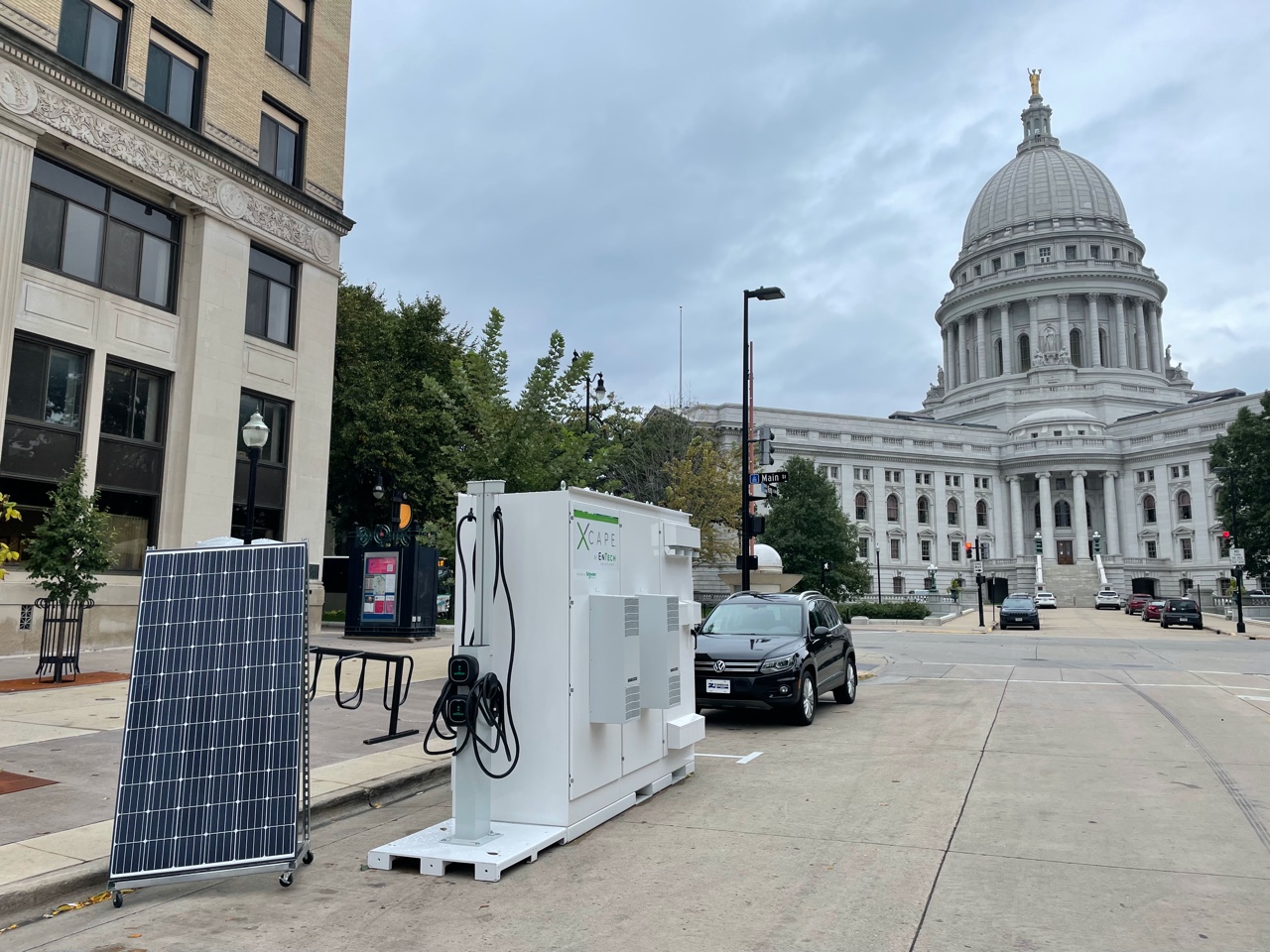
The panel closed the session by discussing two other bills recently introduced by Sen. Rob Cowles:
- $10 million in VW Settlement Funds for EV Charging Station Grants – (LRB-0254/1 Sen. Cowles and Rep. VanderMeer) Grants from these funds would be used to install electric vehicle charging stations at key locations throughout Wisconsin.
- Energy Storage Sales Tax Exemption – (LRB-1513/1) – Sen. Cowles and Rep. Duchow) This legislation would clarify that battery storage devices installed as part of a renewable energy system should be included in the sales tax exemption that already exists for renewable energy system equipment.
The 75 registered attendees made an impact by taking time out of their busy lives and getting involved in the political process. None of these issues will be easy to pass. In fact, most of them face significant opposition from powerful forces. But working together and building coalitions with pro-renewable energy friends helps get important legislation like this adopted.
If you would like to learn what you can do to help as well, contact Jim Boullion, Director of Government Relations at jim@renewwisconsin.org.
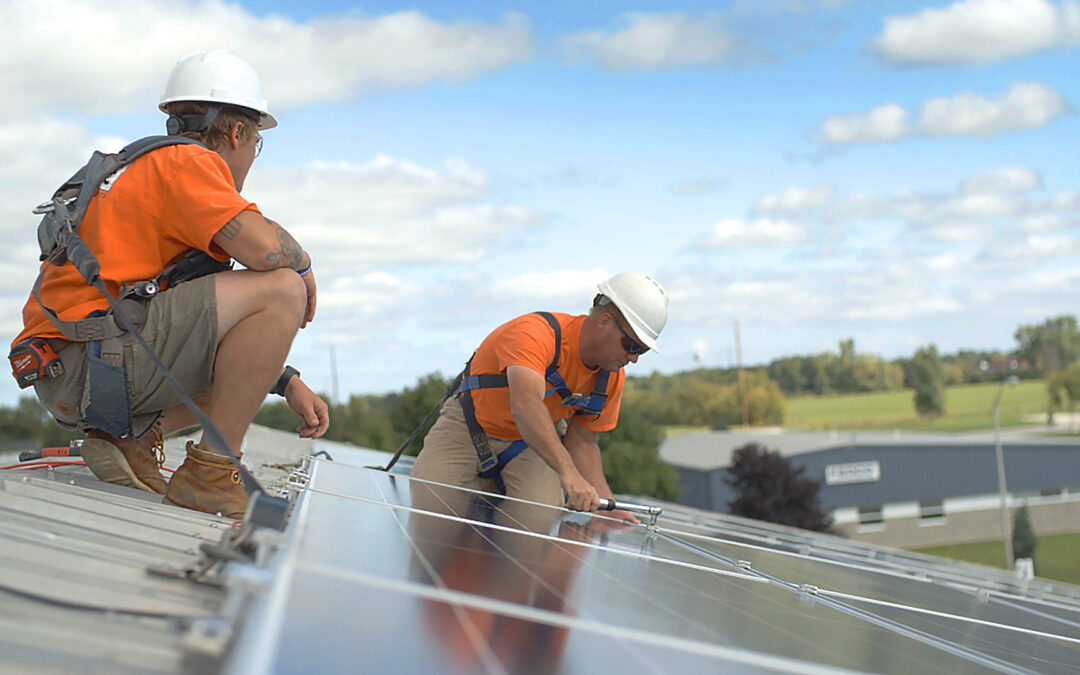
by Heather Allen | Oct 19, 2021 | Advocacy, Electric Vehicles, Jobs, Renewables, Solar
Thirty-one Wisconsin businesses signed a letter supporting ambitious clean energy investments and broad interest in the American Jobs Plan. The signatories, representing higher education institutions, local governments, and biogas, solar, finance, and electric vehicle industries, are committed to “advancing the clean energy economy, building family-sustaining jobs, and expanding economic opportunities for Wisconsinites.”
The letter states, “Wisconsin’s cumulative solar capacity more than doubled in the past year and is anticipated to quintuple in the next 3-5 years. Wisconsin’s clean energy workforce is 76,000 strong, and solar and advanced transportation jobs proved remarkably resilient even during the economic upheaval of 2020.” Investing in these sectors can create jobs and opportunities for Wisconsin to become a clean energy leader in the Midwest.
The electric vehicle sector is a key focus of the American Jobs Plan and an area where Wisconsin has tremendous opportunity to invest. Recent studies and RENEW’s analysis suggest that the federal stimulus funds spent on transportation electrification will yield a 500% return on investment.
Corry Bullis of U.S. FLO said that “Given President Biden’s goal to deploy 500,000 charging stations by 2030, FLO is expanding its manufacturing footprint to meet increasing demand in the U.S and support its climate and air quality goals. Incentives, as outlined by the American Jobs Plan, will be critical to delivering on this promise. We urge Congress to pass an infrastructure package as soon as possible.”
Wisconsin’s solar job market held steady throughout the pandemic. The industry continues to advance, and local job opportunities are growing rapidly, signaling clean energy investments are a bipartisan solution to growing Wisconsin’s economy and advancing careers for local workers.
Ed Zinthefer, an owner of Arch Electric based in Plymouth, WI, says, “More homeowners and businesses are saving money and supporting local jobs in their neighborhoods by going solar. We are busier than ever, growing and hiring and building more clean energy projects. It’s a great time to get into clean energy in Wisconsin.”
Even as the renewable energy markets are growing, there is an urgent need to drive investment and expand our workforce. According to the Solar Energy Industry Association, the solar industry is on a trajectory to reach 400,000 solar jobs by 2030. However, employment will need to exceed 900,000 workers by 2035 to reach President Biden’s 100% clean electricity goal.
Sign your name to support federal investment in clean jobs here in Wisconsin!

by Jodi Jean Amble | Oct 13, 2021 | Policy, Press Release, Solar, Utilities
Today, Senator Rob Cowles (R – Green Bay) and Representative Rachael Cabral-Guevara (R – Appleton) introduced legislation that would clarify using a lease, sometimes known as third-party financing, to acquire a solar array is legal in Wisconsin. RENEW Wisconsin and the members of the Wisconsin Solar Coalition applaud the introduction of this legislation and urge other legislators to support it.
“This legislation will expand access to solar energy in Wisconsin by allowing businesses and homeowners a basic financing option available in other states. Decades of Wisconsin case law and statutes allow for solar leasing or third-party financing,” said RENEW Wisconsin Executive Director Heather Allen. “However, over the past several years, some utilities have challenged solar installations with third-party financing structures. Since the Public Service Commission of Wisconsin and courts have avoided clarifying the law, it is up to the legislature. Without clarity, Wisconsinites lack access to all of the financing options they need to meet their clean energy goals, create jobs, and manage energy bills while improving the resiliency of the electric grid. Wisconsin must affirm the legality of third-party financing to facilitate the shift to clean energy for everyone.”
Across the country, leasing equipment is one of the most often used financing methods for distributed solar. This legislation is an opportunity to provide greater access to affordable, emission-free electricity for all Wisconsinites. Clarifying this law will positively impact many individuals, businesses, and organizations.
“As a building design consultant serving health care and educational clients, I see a tremendous appetite to utilize third-party financing to develop renewable energy projects, microgrids, and heat and power installations to drive down operational costs and increase resiliency, said Mike Barnett at HGA Architects and Engineers. He added, “Unfortunately, in Wisconsin, there is no legal clarity surrounding third-party financing. If the legislature clarified the legality of third-party financing, these types of capital investment projects and associated jobs would dramatically increase.”
Niels Wolter of Madison Solar Consulting said, “I have many not-for-profit and public (i.e., governmental) clients doing amazing work. They would love to do solar projects but don’t qualify for tax incentives. Third-party financing would be an amazing solution for them to generate solar power, reduce their operating costs and teach their communities about renewables.”
Allen added, “This is a simple question of giving individuals, businesses, and organizations the solar financing options that work best for them.”
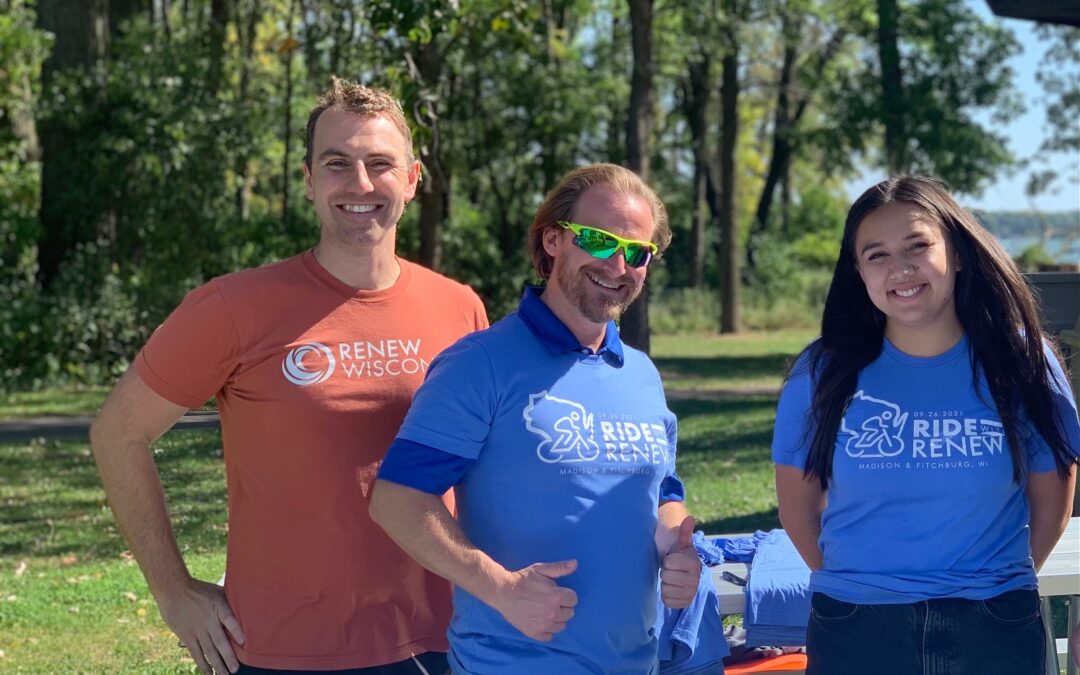
by Jodi Jean Amble | Sep 30, 2021 | Events, Solar
On Sunday, September 26, RENEW Wisconsin hosted the 8th Annual “Ride with RENEW” bike ride fundraiser in Madison and Fitchburg, WI.
We started the day at William G. Lunney Lake Farm County Park in Madison with over 40 determined bike riders! The 18-mile route featured the Capital City Trail and the Badger State Trail as riders enjoyed a sunny, windy day pedaling to our renewable energy tour stops.
Our first stop of the tour was Forest Edge Elementary School, the first zero net energy school in Wisconsin. The new $40 million school is energy-efficient, all-electric with geothermal heating and cooling and battery storage, and generates all its energy needs on-site from renewable energy. The 646 kW DC rooftop solar system with bifacial panels will save $82,000 annually in energy costs.
Next, we stopped at Promega, a major manufacturer of products for biotechnology and molecular biology that is leading the way in incorporating renewable energy for its own use. More than 1,300 kW of solar capacity has been installed around their Fitchburg campus, enabling Promega to slash its electricity consumption by 38% in 2020. At the same time, ground source heat pumps and solar water heaters allow the campus to cut back further on its fossil fuel use. To supplement their investments in energy efficiency and onsite renewables, Promega purchases power from a 2-megawatt share in the 20 MW O’Brien Solar Farm three miles away. Through these initiatives, Promega derives more than 20% of its total energy use from renewable energy sources.
Then it was a short bike ride to Fitchburg City Hall. In the last five years, the City has installed nearly 600 kW of solar capacity on City Hall, Public Library, two fire stations, and a public works maintenance facility. Following its adoption of a 100% renewable energy resolution in 2019, Fitchburg committed to purchasing a portion of O’Brien Solar Farm’s output. The combination of these initiatives will allow the City to meet approximately 40% of its operational needs with solar power.
Riders then biked to O’Brien Solar Fields, Dane County’s largest solar farm to date. This 20-megawatt solar array in Fitchburg covers the former O’Brien Dairy Farm with 60,000 solar panels. The project, developed by EDF Renewables and owned and operated by Madison Gas and Electric (MGE), supplies locally generated solar energy to local businesses, municipalities, and public institutions under MGE’s innovative Renewable Energy Rider (RER). Partners on this project include the City of Fitchburg, Placon, Promega Corporation, Tribe 9 Foods, University of Wisconsin-Madison, Willy Street Co-op, and the Wisconsin Department of Administration.
The next stop on our tour was All Saints Lutheran. Located along Highway PD near McKee Farms Park, All Saints Lutheran installed 56 bifacial solar panels in April 2021, with help from a Solar for Good grant. In addition to hosting church services for their own congregation, All Saints shares its space with the Spanish-speaking congregation of Iglesia Ebenezer Asambleas De Dios. All Saints took this step into solar for the long-term cost savings, but also because they take seriously the call to care for creation as a part of being good stewards of all God has given them. The 20.7 kW array is expected to supply 92% of the facility’s annual electric use.
Lastly, we stopped at one of the solar shelters near the Lussier Family Heritage Center where riders heard from Kathy Kuntz, from the Dane County Office of Energy and Climate Change. With more than 460 panels on four buildings providing renewable electricity to campers and day-use visitors, William G. Lunney Lake Farm County Park and Lussier Family Heritage Center represent Dane County’s first solar-powered park and campground. This year Staff Electric completed and energized a 66 kilowatt (kW) solar energy system at the park’s campground. This system includes rooftop arrays on both the shower building and the park shelter. A separate solar system, also installed by Staff Electric, consists of a rooftop array atop the Lussier Family Heritage Center as well as panels on a nearby park shelter along the Capital City Trail. This 76 kW installation will provide more than 90% of the power consumed by the Lussier Center. An electric vehicle charging station is also available at the Lussier Center. As of today, Dane County owns more solar systems than any other county in Wisconsin—with a combined capacity of more than 800 kW at 16 county facilities. Coupled with the 9 MW solar array at the Dane County Airport (which is a partnership with MGE), Dane County gets 45% of the electricity used for county facilities from renewable energy sources.
We ended the ride back at William G. Lunney Lake Farm County Park with a static electric vehicle display, pizza from Glass Nickel, beer from Wisconsin Brewing Company, and music by the Forward! Marching Band. WKOW Channel 27 stopped by our social hour and featured our riders on the evening’s local news.
This year’s ride highlighted a diverse application of renewable energy, particularly solar, in Dane County. Riders got a first-hand look at a solar farm, a solar-powered campground, a net-zero school, and solar on commercial, faith, and municipality buildings, all in a less than a 20-mile radius!
Thank you again to all of our sponsors, shown below, our bike riders, and everyone who donated to support our riders and helped us raise over $14,000 to continue our education, advocacy, and collaboration to advance renewable energy in Wisconsin!
2021 RIDE WITH RENEW SPONSORS
by Andrew Kell | Sep 13, 2021 | PSC Priorities, Public Service Commission, Renewables, Solar, Utilities
In a stunning policy reversal, Madison Gas and Electric (MGE) submitted a proposal to lower monthly charges and raise energy rates for its residential electric customers. Filed on September 3rd, MGE’s rate application is strongly backed by customer groups and clean energy organizations, including RENEW Wisconsin.
MGE’s filing is the product of negotiations over the summer with RENEW and other parties intervening in the case. If approved as is by the Public Service Commission (PSC), the agreement will pare the fixed charge for residential electric service from $19 per month today to $17 per month in 2022 and $15 per month in 2023. At the same time, energy rates will rise to offset the proposed reduction in the fixed charge.
The monthly fixed charge is the minimum amount assessed on residential customers for electric service. These charges do not vary with energy consumption levels. Hiking fixed charges invariably depresses the volumetric rate assessed to energy consumption, penalizing customers who use relatively little electricity and those who supply themselves with solar power produced onsite. Alternatively, lowering fixed charges and raising energy rates should achieve the opposite result by sending a stronger price signal to incentivize customer investments in energy efficiency and onsite solar.
“Low-income customers, solar customers, and customers who have invested in energy efficiency to reduce energy bills will benefit from this shift,” said Heather Allen, Executive Director for RENEW Wisconsin. “Overall, MGE customers will benefit because reduced energy demand helps limit the need for additional generation capacity. This is a win-win.”
The settlement avoids a contested case hearing in which Citizens Utility Board (CUB) and RENEW had been planning to submit testimony demonstrating that the $19 per month charge was excessive, especially in an urban service territory where the majority of electric customers are renters living in multifamily dwellings.
The MGE settlement follows a similar one struck with Xcel’s Wisconsin utility several months ago. Under the terms of that settlement agreement, which RENEW, CUB and other organizations signed onto, Xcel agreed to lower its fixed charge for residential electric service from $17 per month to $16 per month in 2022 and $15 per month in 2023. As with MGE, Xcel’s energy rates will also increase.
Other positive outcomes of the settlement include MGE’s support for a low-income thermostat pilot program, exploration of further innovative ways to help low-income customers achieve lower energy bills, and MGE’s increased support for smart thermostats and technologies, such as controlled water heaters, heat pumps, and battery electric storage in future filings.
The PSC is now accepting public comments on the MGE rate case. If you’d like to support the settlement agreement, please communicate your thoughts to the PSC via this public comment webpage specific to this case. For more information on the MGE rate case, see the Wisconsin State Journal article here.

 Governor Evers and the Project Developer, Eric Udelhofen, from OneEnergy Renewables at the Ribbon Cutting Ceremony for the Strobus Solar project.
Governor Evers and the Project Developer, Eric Udelhofen, from OneEnergy Renewables at the Ribbon Cutting Ceremony for the Strobus Solar project. O’Brien Solar Fields in the city of Fitchburg, Wisconsin.
O’Brien Solar Fields in the city of Fitchburg, Wisconsin. 








